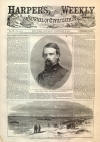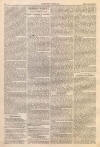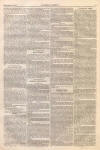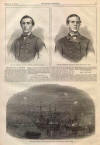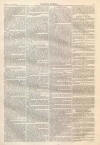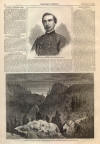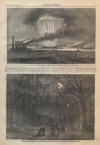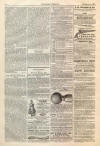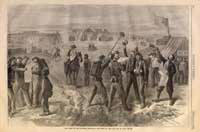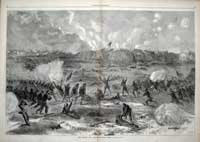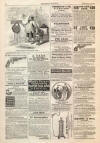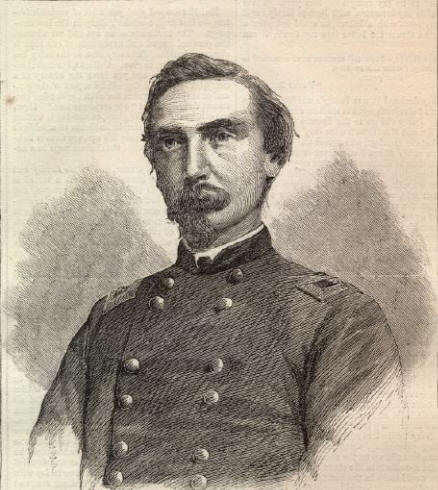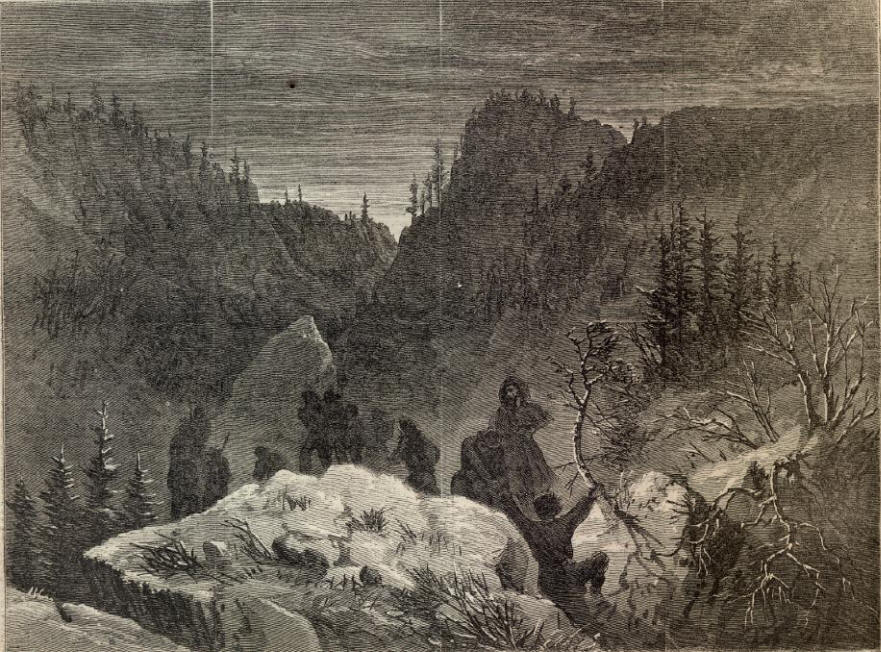|
This Site:
Civil War
Civil War Overview
Civil War 1861
Civil War 1862
Civil War 1863
Civil War 1864
Civil War 1865
Civil War Battles
Confederate Generals
Union Generals
Confederate History
Robert E. Lee
Civil War Medicine
Lincoln Assassination
Slavery
Site Search
Civil War Links
Revolutionary War
Mexican War
Republic of Texas
Indians
Winslow Homer
Thomas Nast
Mathew Brady
Western Art
Civil War Gifts
Robert E. Lee Portrait
|
BRIGADIER-GENERAL ADELBERT AMES.—[PHOTOGRAPHED BY
BRADY.)
GENERAL ADELBERT AMES.
BRIGADIER-GENERAL ADELBERT AMES
is a native of Maine. He entered the Academy at West Point in 1858, and was
commissioned, May, 1861, Second Lieutenant, Second United States Artillery. He
was immediately afterward promoted to First Lieutenant of the Fifth Artillery.
He participated in the siege of Yorktown in the Peninsula campaign, and for
distinguished services rendered on that occasion was brevetted Captain in the
Regular Army. For other meritorious services in the battles of Malvern Hill and
Garnett's Farm he was brevetted Major July 1, 1862.
In August he was commissioned
Colonel of the Twentieth Maine, and in the subsequent campaign of the Army of
the Potomac won considerable reputation as an officer. He was commissioned
Brigadier-General May 20, 1863. During
General GRANT'S Virginia campaign General
Amiss has commanded, first the Third Division of the Tenth Corps, and afterward
the Second. When the Tenth and Eighteenth Corps were reorganized he was placed
in command of the Third Division of the Twenty-fourth. General AMES'S Division
was prominently engaged in the assault on Fort Fisher.
DESTRUCTION OF THE REBEL
RAM " SAVANNAH."
THE rebel ram Savannah was blown
up by the enemy on the night of our occupation of Savannah. The sketch from
which we have engraved an illustration of the scene was taken by Captain BATCHEL,
of the Signal Corps. Captain BATCHEL describes the scene as having been one of
uncommon grandeur. The vessel was fired by the rebel crew just before leaving
her. She burned for some time before the fire was communicated to her magazine,
when she blew up. The shock was very perceptible in the city and for many miles
around. She is not, however, so complete a wreck as the rebels designed to make
her.
GENERAL A. H. TERRY.
MAJOR-GENERAL A. H. TERRY,
commanding the military division of the expedition against Fort Fisher, is a
native of Connecticut, not more than thirty-five years of age. He was a lawyer
by profession, but devoted considerable attention to military matters. He
commanded one of the best militia regiments of Hartford. He answered the first
call for men in this war, his regiment, the Second Connecticut, being among the
first in the field. He took part in the first
battle of Bull Run under KEYES of
TYLER'S Division. The Second Connecticut was enlisted for three months, and at
the expiration of its term of service TERRY took command of the Seventh
Connecticut, which belonged to the command of General T. W. SHERMAN in the
expedition against Port Royal. TERRY was prominent in the siege
operations on
Tybee Island, which
resulted in the capture of Fort Pulaski. For distinguished services on this
occasion he received the appointment of Brigadier-General, to date from April
25, 1862. He led a brigade of the Tenth Corps in the battle of Pocotaligo, South
Carolina, in October, 1862, and subsequently, under General GILLMORE, served in
the capture of Morris Island, at the siege of Charleston. The Tenth Corps, in
which he commanded the First Division, was subsequently transferred to the James
; and when GILLMORE was relieved of command, Terry succeeded him, though he
afterward
yielded to the more pressing
claims of the late General BIRNEY. His conduct in the rebel assault on the
Darbytown road last summer saved the corps from a serious reverse. After
BIRNEY'S death the Tenth and Eighteenth corps were consolidated, forming the
Twenty-fourth, and the command of the First Division was assigned to General
TERRY. General TERRY was not in the first expedition against Fort Fisher, which
failed. But he commanded in the second, which succeeded, and will always be
connected with the glorious event of Jan. 15, 1865, whatever laurels he may
hereafter win.
CORRESPONDENCE.
LETTER FROM WASHINGTON.
THE Old World can not boast of a
more glorious capitol than that owned by the freemen of the United States. The
rotunda is a fit shrine for those old Revolutionary paintings by the
Revolutionary hero, TRUMBULL, The dome, rising in beautiful symmetry, is the
beacon of liberty to the country, lifted up so high that the freedom born shaft
of Bunker Hill might be placed within it, with many feet to spare above its
summit. Within the same marble edifice sit almost enthroned the legislators of
our country in the most elegant of chambers. One would conceive that there were
architectural at-tractions enough here to bring all our partros conscripti to
their seats at the hour of twelve. But too frequently do the Speaker and
Vice-President call their respective bodies to order at this hour without a
quorum. Yet why should not lassitude prevent men from attending to their duties
who load the desks before them with the boots which are defacing the nation's
furniture? But the expiring Thirty-eighth Congress has its SUMNER, COLFAX,
CLARKE, FOOT, COLLAMER, GRIMES, STEVENS, and the WASHBURNES, to whom the nation
is indebted for a faithful and earnest discharge of their duties.
A visit to the national capitol
is incomplete without a look around the Congressional Library. For while the
library of Yale College contains less than fifty thousand volumes, the capitol
library contains over sixty thousand. Yet the arrangement is so compact and nice
that a guess would probably come far short of the proper figure. The books are
all arranged according to their subjects. his was done by THOMAS JEFFERSON after
the Baconian system. To the three grand divisions of mental activity, memory,
reason, imagination, correspond respectively history, philosophy, and the fine
arts. Each of these grand divisions is divided and subdivided. For instance,
history is divided into the civil and natural departments, and so forth.
Newspapers are classified under the department of civil history. Our curiosity
prompted us to go behind the scenes, and examine how great a museum of American
newspapers is on file in our nation's library. Alas ! out of the very few we do
not recollect any set complete from their origin. But the London Times is here
in ponderous tonics complete from its foundation. The suggestion was forcibly
brought home to us that the United States are rich enough in the style and
character of their newspaper press to have files of the principal papers through
out the land carefully kept in the capitol library. Did only the votaries of the
press derive benefit therefrom, that profession is large enough to have its "
reports" carefully treasured up here.
Upon the lucus a non lucendo
principle the "Baltimore Depot" deserves a passing reflection. Were a hackman to
oblige his passengers to alight in a mud puddle he would do something similar to
the (Next Page)
UNIONISTS ESCAPING ACROSS THE MOUNTAINS OF EAST
TENNESSEE ''.—[SKETCHED BY A. W. WARREN.]
|
